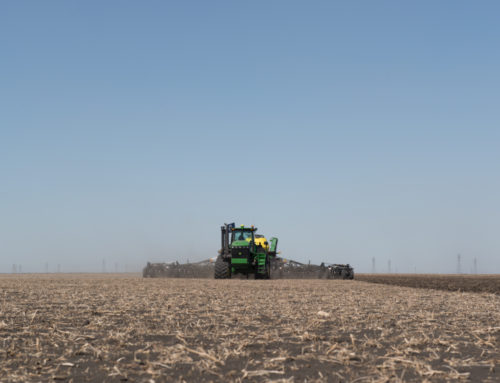The goal with spraying any pesticide is to ensure the target is sufficiently covered to do the job, otherwise it can be a waste of time and resources. This year, time is especially short in some regions due to wet conditions.
Targeting is straightforward when spraying early, pre-seed or pre-emergence. There’s no big crop canopy to contend with. Only weeds are present. Later, when spraying into a standing crop, the situation gets more challenging. There is plenty of non-target material to intercept the herbicide, fungicide, or insecticide and prevent the job from being sufficiently effective.
Tom Wolf of Agrimetrix has spent his professional career working in pesticide efficacy, spray drift, tank cleanout.
He and his partners have focussed on research and training in the area of low drift spray applications. “Applying a low drift spray (basically larger droplets), means the spray has a greater chance of reaching the target,” says Wolf. “Finer sprays can blow away more easily. They also can restrict the amount of time you have available to spray as wind conditions become a limiting factor.”
With growers pressed for time, farming larger operations, losing time to weather-related conditions can be a serious issue.
“Growers know that spraying at the right time is key to maximizing pesticide efficacy,” says Wolf.
Growers are also aware that a low drift spray has fewer, coarser spray droplets. “The question is, will there be enough droplets on the leaf to do the job?” says Wolf. “In weed control, this will depend on the target type and on the herbicide mode of action.”
Early in the season, when the weeds are very small, more droplets are needed to hit them. One way to increase droplet number is to apply higher water volumes. “Another option is to increase spray pressure,” says Wolf. “This will decrease droplet size, but both strategies will have the same basic outcome, increasing coverage.”
Looking at the herbicide side of the equation, some active ingredients need a lot of coverage to work and some don’t.
“There are basically two groups of herbicides,” explains Wolf. “Systemic herbicides like glyphosate are so well translocated they don’t require a lot of coverage on the weed to work effectively. Sometimes a single droplet on a small plant does the job.”
Contact herbicides, on the other hand, require for a greater proportion of the leaf to have droplets on it. This is increasing in importance lately as tank mixes with glyphosate often have contact modes of action part of an overall strategy to reduce the risk of developing herbicide tolerant weeds.
“So, the conundrum for growers is how to balance these two opposing herbicide requirements,” says Wolf. “Our recommendation is to go into the spraying operation knowing the modes of action of the products in the tank mix. Then, decide on water volume, pressure, and droplet size based on the product you determine to be the limiting factor.”
Wolf recommends if there is a contact herbicide in the mix, then increase water volume and decrease droplet size.
“Almost all our clients have low drift nozzles,” says Wolf. “And they love them. To ensure good coverage, there’s no need to change nozzle type. All that’s necessary may be a different nozzle size, or a different spray pressure, to tailor water volume and droplet size to the situation.”
Although the downside of using contact products in a tank mix is having to ensure better coverage, the upside is more effective resistance management. “Delaying the onset of weed resistance is only going to become more important over time, not less,” says Wolf.







Leave A Comment